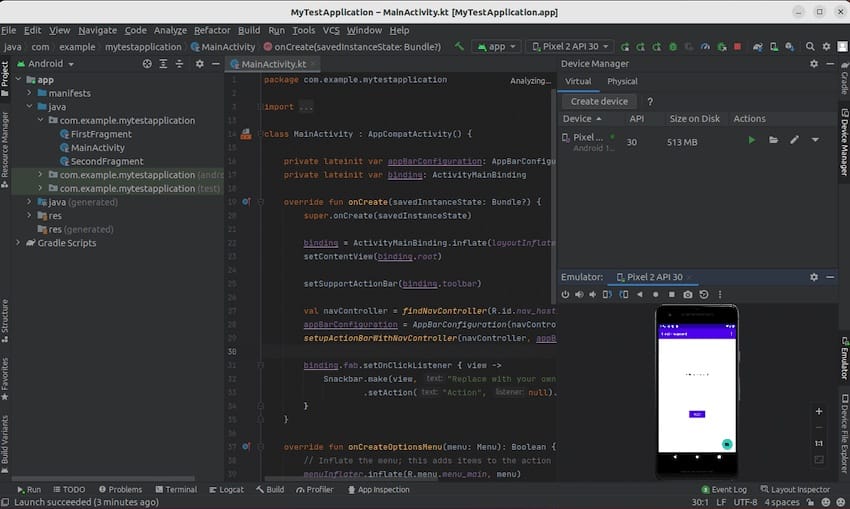
In this tutorial, we will show you how to install Android Studio on CentOS 7 server. For those of you who didn’t know, Android Studio is the official Integrated Development Environment (IDE) for Android app development, based on IntelliJ IDEA. On top of IntelliJ’s powerful code editor and developer tools, Android Studio offers even more features that enhance your productivity when building Android apps
This article assumes you have at least basic knowledge of Linux, know how to use the shell, and most importantly, you host your site on your own VPS. The installation is quite simple and assumes you are running in the root account, if not you may need to add ‘sudo‘ to the commands to get root privileges. I will show you the step-by-step installation of Android Studio on the CentOS 7 server.
Prerequisites
- A server running one of the following operating systems: CentOS 7.
- It’s recommended that you use a fresh OS install to prevent any potential issues.
- SSH access to the server (or just open Terminal if you’re on a desktop).
- An active internet connection.
- A
non-root sudo useror access to theroot user. We recommend acting as anon-root sudo user, however, as you can harm your system if you’re not careful when acting as the root.
Install Android Studio on CentOS 7
Step 1. First, let’s start by ensuring your system is up-to-date.
yum clean all yum -y update
Step 2. Installing Java 8 on CentOS.
First, you need to make sure that your CentOS is equipped with JAVA. For the installation you can download the latest version of Java:
rpm -ivh jdk-8u162-linux-x64.rpm
Once installed we need to set Java environment variables such as JAVA_HOME on CentOS 7:
export JAVA_HOME=/usr/java/jdk1.8.0_25/ export PATH=$PATH:$JAVA_HOME
Checking the Installed java version:
### java -version java version "1.8.0_65" Java(TM) SE Runtime Environment (build 1.8.0_65-b17) Java HotSpot(TM) 64-Bit Server VM (build 25.65-b01, mixed mode)
Step 3. Install Android Studio on CentOS.
Next, install the studio by downloading the ide file from the Android site and unzipping the same:
unzip android-studio-ide-171.4443003-linux.zip
Move the android-studio directory to /opt directory:
mv /tmp/android-studio/ /opt/
Then, create a symlink to the studio executable to quickly start it whenever you need it:
ln -s /opt/android-studio/bin/studio.sh /usr/local/bin/android-studio
Now launch the studio from a terminal:
studio

Congratulations! You have successfully installed Android Studio. Thanks for using this tutorial for installing Android Studio on CentOS 7 systems. For additional help or useful information, we recommend you check the official Android Studio website.